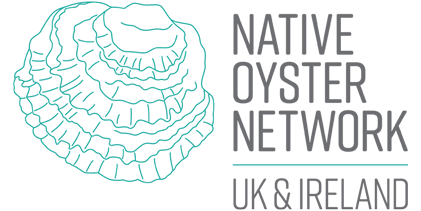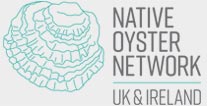The project
The Native Oyster Network- UK & Ireland and the NORA Biosecurity Working Group have been working to develop guidelines for native oyster restoration in practice. The guidelines were initially drafted during a workshop in January 2020, hosted by Heriot-Watt University, and funded by the Environment Agency and an EU Life grant administered via Wetlands International, and have subsequently been developed further online by the NORA and NON communities.
The guidelines seek to provide new and existing projects with advice regarding the biosecurity issues related to native oyster restoration in Europe. It is intended that these guidelines can be used by project managers to understand the ecological risk, legislative requirements, appropriate planning and practical actions which are necessary when considering restoration at multiple sites, or when translocating material. Guidelines for those seeking to engage with, or establish native oyster hatcheries are also included.
The aims of consultation
NORA and UK-Ireland NON are seeking to develop a widely accepted and useful product to support oyster restoration in Europe. This can best be achieved by ensuring that all those with experience in native oyster restoration and/or marine biosecurity are able to provide input and comments, and are given the opportunity to critically assess the advice provided in the guide. With the current online consultation process the networks aim to ensure the active engagement of experts and stakeholders, and provide all with a mechanism for contributing to the development of the resulting guidelines. After evaluating the comments and suggestions, a final version of the guidelines will be published and launched in winter 2020.
Please make all comments and suggested additions as “suggestions” in the online version of the guidelines you can find here. You are also welcome to e-mail comments to NORA and UK-Ireland NON network coordinators at: secretariat@noraeurope.eu and nativeoyster@zsl.org
The timeline
We would be grateful for comments and responses up to COB on the 22nd Sept 2020. Thereafter the editorial and design team will address any comments and suggested edits and launch the guidelines in the winter 2020. The authors and editorial team are hugely grateful to all those taking the time to review the document, and we look forward to receiving constructive comments, edits and additions.
There are several areas we are particularly interested in understanding or developing further. Please consider the following when reviewing the document:
- Are the guidelines helpful in understanding:
-
- The biosecurity risks associated with oyster restoration?
- The process of developing a sound biosecurity protocol for restoration efforts?
- Can further resources be included from a wider range of geographies?
- Are there established techniques which should be considered for inclusion in the guide?
- Please note that most figures are placeholder images and not the final version as these will be developed at the design stage. Reference styles will also be consolidated at the design stage.
GPDR
We take our responsibility of safeguarding your personal data seriously. In the interest of being able to contact you with regards to any comments made, we would be grateful if you could provide your name alongside any comments. Any contact information provided (in the document or by e-mail) will be used solely for the purpose of contacting individuals in case clarifications are needed regarding their feedback or comments. By providing comments it is implicit that you have read, and give your consent to being contacted if clarification is required. Should you wish to, you will be able to contribute comments anonymously to the consultation document.
Should you have any questions about the consultation process please contact us: secretariat@noraeurope.eu and nativeoyster@zsl.org



